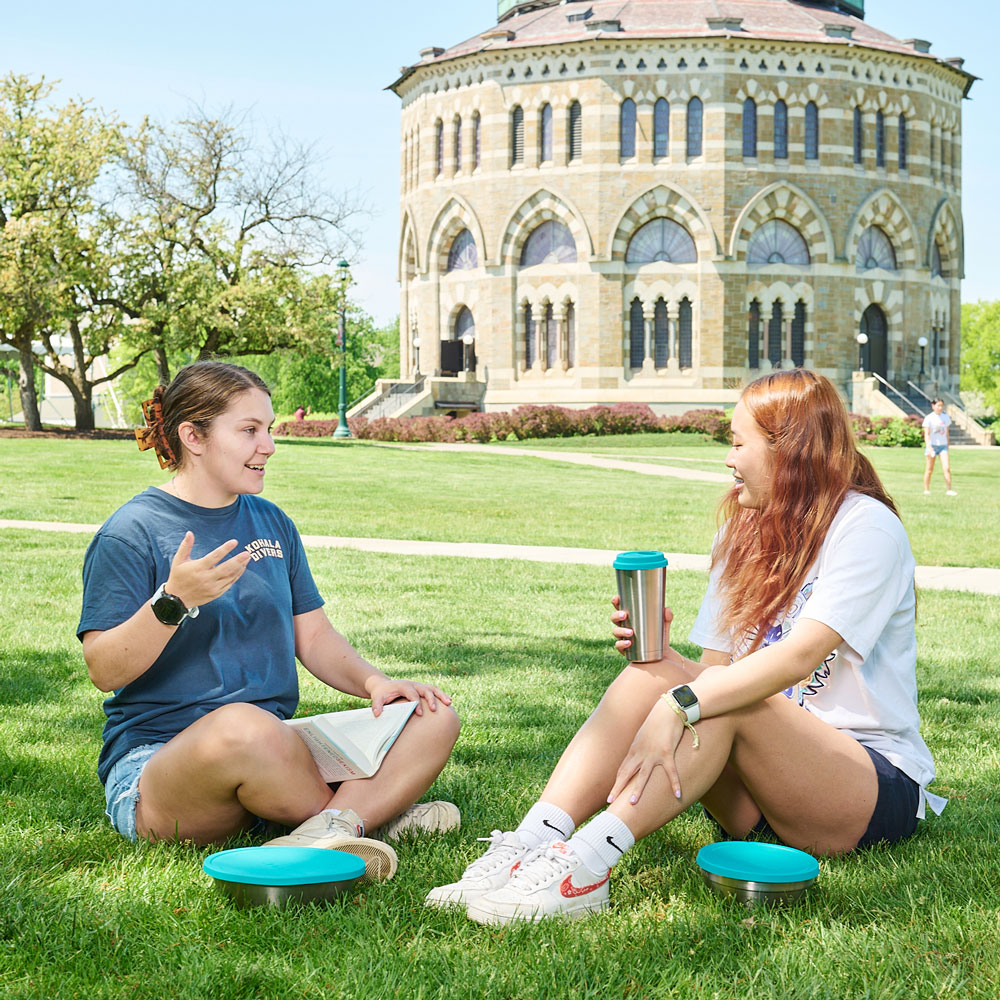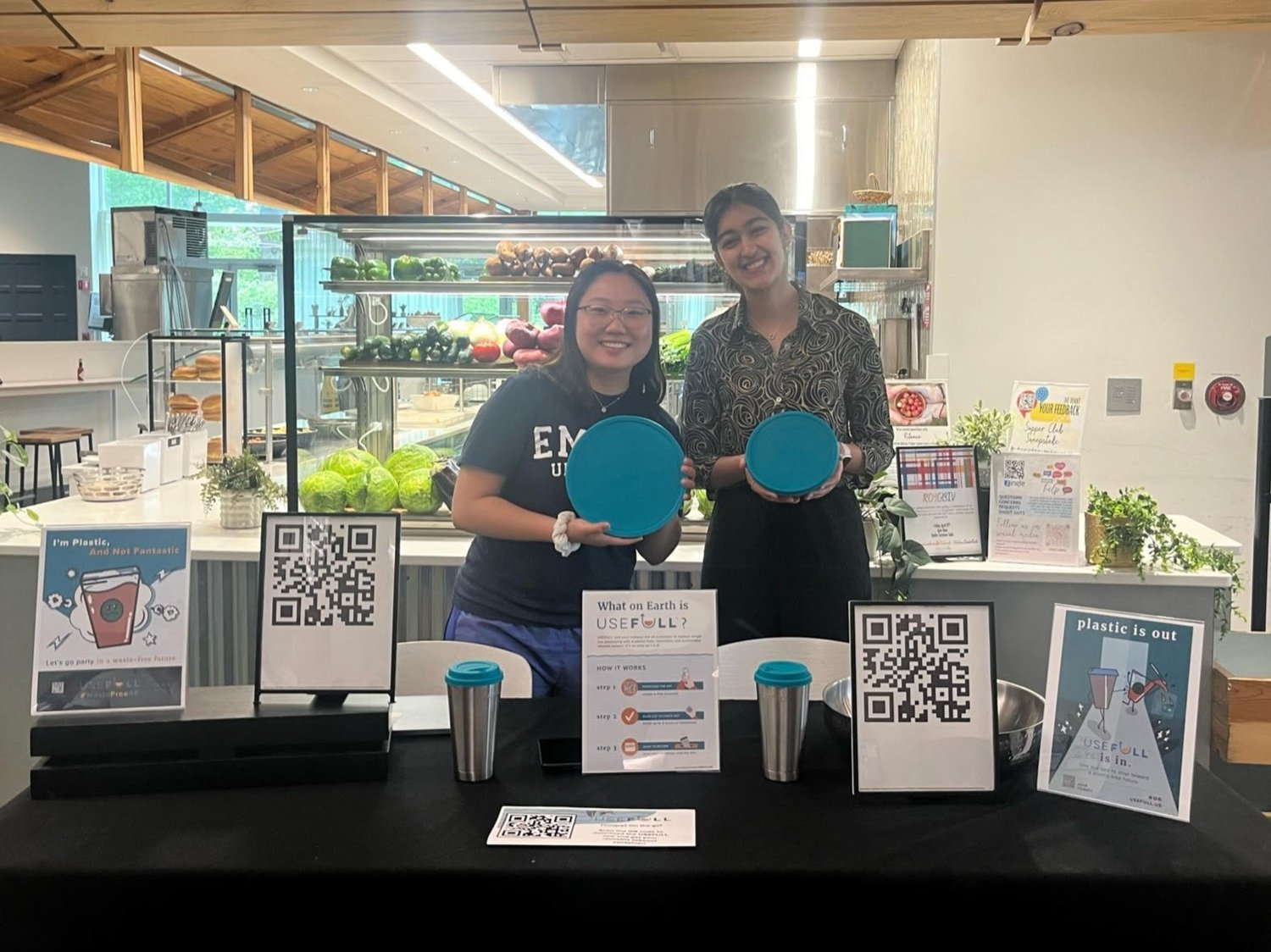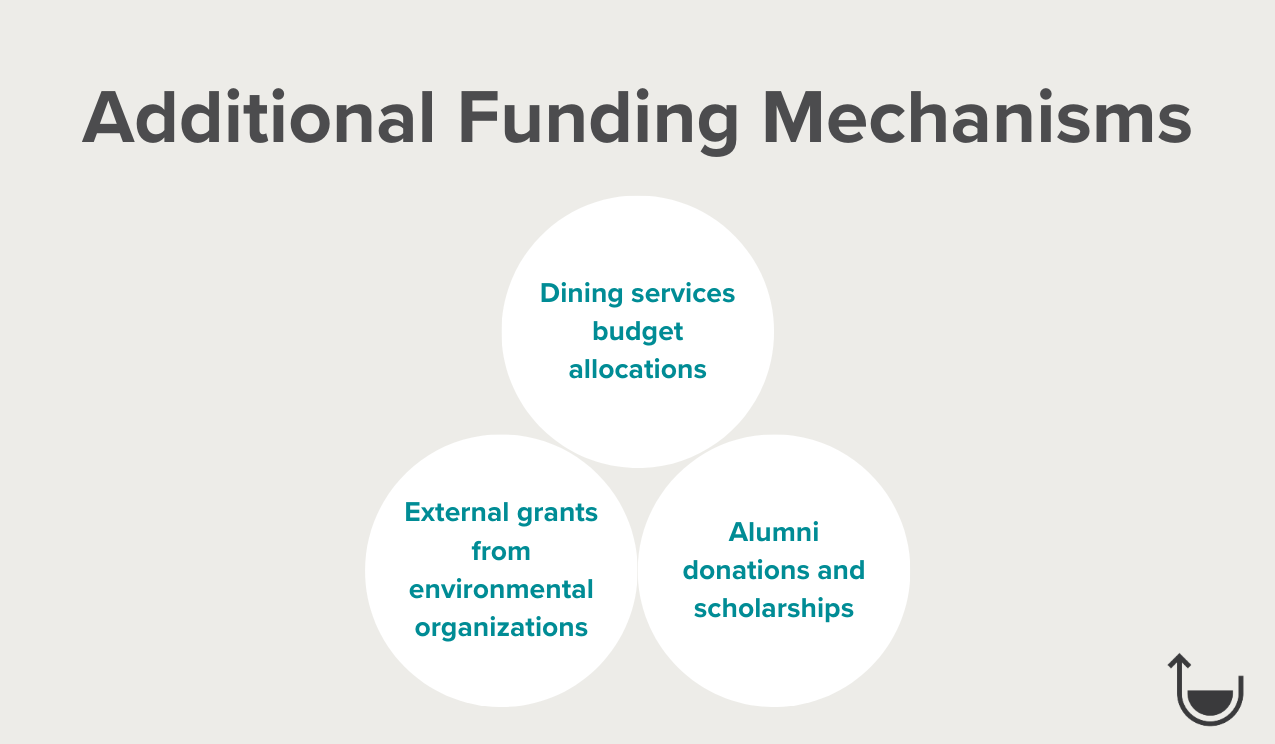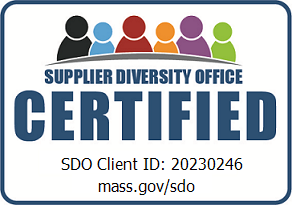
Reuse and Plastics
Student-Led Advocacy for Sustainable Takeout on Campuses
Sustainability isn’t just a buzzword—it’s a way of life, especially for college students, and colleges and universities have a unique opportunity to lead by example. Implementing sustainable takeout options on campuses can significantly reduce waste and promote environmentally friendly practices.
Student groups are at the forefront of initiating sustainability initiatives on campus and often identify funding for trials and early engagements with such efforts, especially around waste reduction and reusables for dining.
This resource guide explores various funding and implementation options for student-led initiatives focused on sustainable takeout. We hope it inspires students to learn more about sustainable takeout, lean into a plastic-free approach to campus dining, and seek out campus groups that can provide funding for sustainable dining at their colleges and universities.
Are you a student interested in advocating for plastic-free reusables on your campus?
Get in touch!
Table of Contents
What is Sustainable Takeout and Why Does it Matter?

Single-use takeout containers are a problem for the environment. According to the EPA’s most recent estimate, containers and packaging contribute more than 28% of the municipal solid waste generated in the U.S. Equally significantly, less than 10% of plastic is recycled in the U.S.—meaning that unfortunately, single-use plastic containers aren’t likely to be recycled. Reusable takeout addresses these issues by creating a circular system of resources. Since containers are used again and again, reusable container systems offer significant cost and waste savings.
The Importance of Sustainable Takeout on Campus
As reusable takeout emerges, college campuses are an ideal setting for implementation. With thousands of meals served daily, campuses have a significant opportunity to decrease waste. Perhaps more importantly, colleges can expose the next generation of leaders to principles of sustainability.
Before advocating for a reuse program on campus, it is valuable to gain a clear understanding of the benefits of reusable takeout. Implementing reusable takeout solutions supports campus goals in multiple ways, including cost savings, reduced waste, and enhanced campus engagement.
Cost Savings
Institutions that implement reusable takeout programs can save an average of 20-50% compared to single-use compostables. For example, reducing reliance on single-use items can lower procurement costs, contributing to the financial sustainability of dining services. These savings can be reinvested into other sustainability initiatives, creating a positive feedback loop that enhances the overall environmental performance of the campus.
Environmental Impact
Single-use plastic waste is a major contributor to environmental pollution. According to the Environmental Protection Agency (EPA), containers and packaging make up a significant portion of municipal solid waste, amounting to approximately 82.2 million tons. This highlights the need for improved sustainable practices, especially in environments like college campuses, where high volumes of food and beverages are consumed daily.
By reducing reliance on single-use containers, campuses significantly decrease their waste output, helping progress toward broader sustainability goals. For instance, the EPA estimates that reducing single-use plastics significantly lowers the volume of waste generated, thus decreasing the environmental impact associated with waste disposal and management.
The most effective way to reduce waste, and the most environmentally preferred strategy, is to not create it in the first place. Source reduction, along with material reuse, are the most functional ways to save natural resources, protect the environment and save money.
— U.S. Environmental Protection Agency (EPA)
Reusable programs don’t only lead to waste savings, they also reduce the carbon footprint of campus dining operations. The production, transportation, and disposal of single-use plastics are energy-intensive processes that contribute to greenhouse gas emissions. According to the Ocean Conservancy, a 50% reduction in single-use plastics would eliminate more than 10.8 billion metric tons of emissions. By transitioning to reusables, campuses lower their carbon emissions, supporting global efforts to combat climate change.
Student and Community Engagement
Colleges and universities are in a unique position to drive change. Sustainable initiatives engage students and staff, fostering a sense of community and shared responsibility toward environmental stewardship. Programs like reusable takeout containers can serve as educational tools, raising awareness about sustainability issues and encouraging behavioral changes among students and staff. Significantly, reusable takeout programs expose students to circular economy principles at a young age, and they can take these principles with them throughout their personal lives and careers.

Engaging the campus community in sustainability efforts can also enhance the institution’s reputation, attracting environmentally conscious students and staff. A strong commitment to sustainability can differentiate a university and serve as a point of pride for the entire campus community.
Understanding Campus Dining Operations
When advocating for a reusable takeout program, it is critical to first understand the nuances of dining operations on campus. A campus’ dining operations model affects how reusable takeout programs can be implemented, and presents unique challenges and opportunities. Key considerations include whether dining services are self-operated or contracted to providers like Sodexo or Bon Appetit. Additionally, the dining models present (e.g., all-you-care-to-eat, retail restaurants, order ahead) affect takeout volume and potential checkout procedures.
According to a study by the National Association of College & University Food Services (NACUFS), self-operated dining services tend to have more direct control over their sustainability practices, allowing for quicker implementation of programs like reusable takeout containers. Conversely, contracted services might require negotiations and approvals from higher levels of the contracting companies, potentially slowing the process. While the process may require more steps, implementation is certainly feasible with the right approach and partnerships, and can ultimately lead to broader implementation on campuses and greater quantities of containers replaced with reusable options.
Student groups and funding organizations should spend time learning the nuances of dining operations on their campuses to determine the opportunities that exist to implement sustainability practices, and how to engage with auxiliary services and campus dining teams.
Engaging Stakeholders
Successful implementation of a sustainable takeout program requires collaboration with campus staff. Engaging with stakeholders such as sustainability advocates, dining services personnel, and auxiliary services staff can help student advocates better understand the current state of dining and sustainability programs and gain additional support.
Key Stakeholders to Identify:
- Sustainability Office advocates (i.e. Sustainability Director, Chief Sustainability Officer, Zero Waste Manager)
- Dining Services staff (i.e. Assistant Dining Director, Dining Sustainability Coordinator, Dining Operations Manager)
- Auxiliary Services department (i.e. VP of Auxiliary Services, Procurement Manager)
- Decision-makers like Dining Directors or Auxiliary Services Directors
Setting up meetings with these stakeholders and discussing the feasibility and benefits of reusables can pave the way for successful implementation.
Engaging stakeholders involves presenting clear benefits of the program, both environmentally and financially. For instance, presenting data that demonstrates cost savings from switching to reusables can be compelling. Data indicates that institutions can save an average of 20-50% compared to single-use compostables by saving money on single-use containers and reduced resources allocated to waste hauling. These savings can be reinvested into other sustainability initiatives, creating a virtuous cycle of environmental benefits.
Involving stakeholders from the outset ensures that the program has the necessary support and resources for successful implementation. Regular meetings and updates can keep everyone informed and engaged, fostering a collaborative environment.
Student Advocacy and Implementation Routes
Students have a powerful voice in advocating for sustainable initiatives. Identifying and collaborating with student groups and organizations dedicated to sustainability can amplify efforts. Student groups that impact or fund these efforts include:
- Student government (especially sustainability branches)
- Student interns in Dining and Sustainability departments
- Independent groups like a Sustainability Club, Green Club, or Green Fund
Connecting with these groups can provide valuable support and resources for a reuse initiative. For instance, student government branches dedicated to sustainability can offer formal channels for advocating for change. They can help navigate university policies and provide a platform for raising awareness among the student body.
Additionally, student interns within dining and sustainability departments can offer practical insights and assist with the day-to-day logistics of implementing the program. Their position within the departments can provide valuable connections with stakeholders. Their involvement can also ensure that the program is tailored to meet the specific needs and preferences of the student body.
Independent student groups, such as the Sustainability Club or Green Club, often have passionate members who are eager to support green initiatives. These groups can help with organizing events, conducting awareness campaigns, and rallying student support.
Resourcing Opportunities for Sustainable Takeout Programs
Introducing new sustainability initiatives often requires initial funding. Many campuses offer funding mechanisms, including green funds and grants, which finance campus sustainability projects.
Steps to identity funding opportunities:
- Investigate how sustainability initiatives are currently funded on campus.
- Look for green funds or grants dedicated to environmental projects.
- Understand the funding application process and deadlines.
Student-led campus green funds
Campus green funds are financial resources allocated for sustainability projects and initiatives on campus. These grants have the goal of reducing waste, minimizing greenhouse gas emissions, improving operations, and otherwise supporting sustainability innovations on campus—which make them a great option for financing a reusables program. In most cases, funding is allocated by a student-led committee. Students, faculty, administrators, and staff are invited to apply to these funds. Application deadlines can range from once per year, once per term, biweekly, or at a different cadence.
Examples of student-led green funds:
- Northern Arizona University’s Green Fund: Northern Arizona University (NAU) has an established Green Fund, providing financial support for student-led sustainability projects. This fund, supported by student fees, exemplifies how campuses can prioritize and finance environmental initiatives. NAU’s Green Fund is an excellent model for other institutions. It demonstrates the potential of student-driven funding mechanisms to support impactful sustainability projects. The fund finances projects that reduce the university’s environmental footprint, and its success highlights the importance of institutional support for such initiatives.
- University of California, Berkeley’s Zero-Waste Initiative: UC Berkeley has implemented a comprehensive zero-waste program, significantly reducing the amount of waste sent to landfills. The initiative includes the use of reusable containers and utensils, supported by funding from campus sustainability grants. The sustainability plan and program is currently diverting about 54% of municipal solid waste stream to recycling, composting, or reuse. UC Berkeley’s Campus Green Initiative Fund (TGIF) provides grants for student, faculty, and staff-initiated sustainability projects. TGIF allocates funds to projects that promote sustainable modes of transportation, increase energy and water efficiency, restore habitat, promote environmental and food justice, and reduce waste. The UC Berkeley Single Use Plastic Reduction Target focuses on eliminating single use plastics by 2030.
- Harvard University’s Green Revolving Fund: Harvard’s Green Revolving Fund finances projects that improve campus sustainability, including initiatives focused on waste reduction and energy efficiency. The fund has successfully supported numerous student-led projects, demonstrating the potential of revolving funds to drive continuous improvement in campus sustainability. The Green Revolving Fund at Harvard is designed to support projects that provide a return on investment through cost savings. This innovative approach ensures the fund’s sustainability by reinvesting savings into new projects, creating a cycle of ongoing environmental improvement.
- University of Michigan’s Planet Blue Student Innovation Fund: This fund provides grants for student-led sustainability projects, encouraging innovative solutions to environmental challenges on campus. Projects funded by the Planet Blue Student Innovation Fund have included reusable takeout programs, highlighting the impact of dedicated sustainability funds. The Planet Blue Student Innovation Fund supports a wide range of projects, from renewable energy initiatives to waste reduction programs. By empowering students to develop and implement their ideas, the fund fosters a culture of innovation and sustainability on campus.
These are just a sample of existing student-led and/or university-implemented sustainability programs that help manage the processes around reusable takeout, related funding, and successful implementation of sustainable takeout programs. They also demonstrate the effectiveness of student advocacy and institutional support in driving meaningful environmental change. Below are additional examples of green initiative funds on campus.
- UCLA’s The Green Initiative Fund (TGIF)
- UNC Asheville’s ESG Fund
- New York University Green Grants
- Gonzaga’s Green Fund
- UC Irvine’s The Green Initiative Fund (TGIF)
- Williams College’s Community Climate Fund
- Colorado State University’s Sustainability Fund
- Stanford’s Green Fund
- UBC Sustainability Revolving Fund
- Arizona State University’s Sustainability Initiatives Revolving Fund
- University of Vermont’s Clean Energy Fund
- Tufts Green Fund
- Zero Waste Coalition at Cal
- Plastic Free Emory
Additional Funding Mechanisms:

Exploring these avenues can provide the necessary financial support for a reusable takeout program. For example, dining services may have budget allocations for sustainability projects that can be tapped into. Alumni donations and sponsorships can also provide significant funding, especially if the program aligns with the values of potential donors.
External grants from environmental organizations offer another valuable source of funding. Organizations such as the Environmental Protection Agency (EPA) and various foundations offer grants for projects that promote sustainability. Researching and applying for these grants can provide substantial financial support for your initiative.
Challenges and Solutions
While the benefits of reusable takeout programs are clear, implementing such initiatives can present challenges. Common obstacles include initial funding requirements, logistical complexities, and resistance to change. However, these challenges can be addressed with careful planning and effective strategies.
Initial Funding: Identifying and applying for green funds, grants, and external funding sources is crucial. Additionally, presenting a compelling case for the long-term cost savings and environmental benefits of reusables can help secure support from university administrators and potential donors.
Logistical Complexities: Implementing reusable programs involves coordinating with dining services, managing the distribution and collection of containers, and ensuring proper sanitation. Developing a detailed implementation plan that addresses these logistical challenges is essential. Collaborating with dining services staff and other stakeholders can help streamline processes and ensure the program runs smoothly.
Resistance to Change: Change can be met with resistance from students and staff accustomed to single-use containers. Education and awareness campaigns are critical to overcoming this resistance. Highlighting the environmental impact of single-use plastics and the benefits of reusables can encourage adoption.
Key Questions to Consider:
- Is there an existing reusable program on campus? What improvements are needed?
- Are there campus-wide or dining-specific sustainability goals? What existing sustainability efforts are in place?
- Is there student demand for reusable? Have students previously advocated for such programs?
- What is the dining services model on campus?
First Steps to Implementing Reusable Takeout Programs
There are many details to consider when building an effective reusables program. To summarize, we recommend that student advocates start by following these core steps:
- Understand the Need: Assess the specific benefits of reusables for the campus.
- Engage Stakeholders: Identify and collaborate with sustainability advocates and decision-makers.
- Find Funding: Explore and secure funding opportunities through green funds, grants, and other mechanisms.
- Advocate and Implement: Leverage student groups and campus organizations to advocate for the program and drive implementation.
By following these steps, students can lead the way in creating sustainable campuses, reducing waste, and promoting environmental responsibility.
Read a case study sharing Montana State University’s road to reusables
Closing the loop on reusables on campus
As a student leader, it may seem daunting to advocate for a change in campus operations like reusable takeout. However, campus leaders strongly value the ideas and experiences of their students. By developing an understanding of campus operations, engaging stakeholders, and identifying funding mechanisms, those advocating for change can make their voices for sustainability heard. Students are powerful advocates for change, and their ideas and advocacy have the potential to create a long-lasting impact on campuses.





